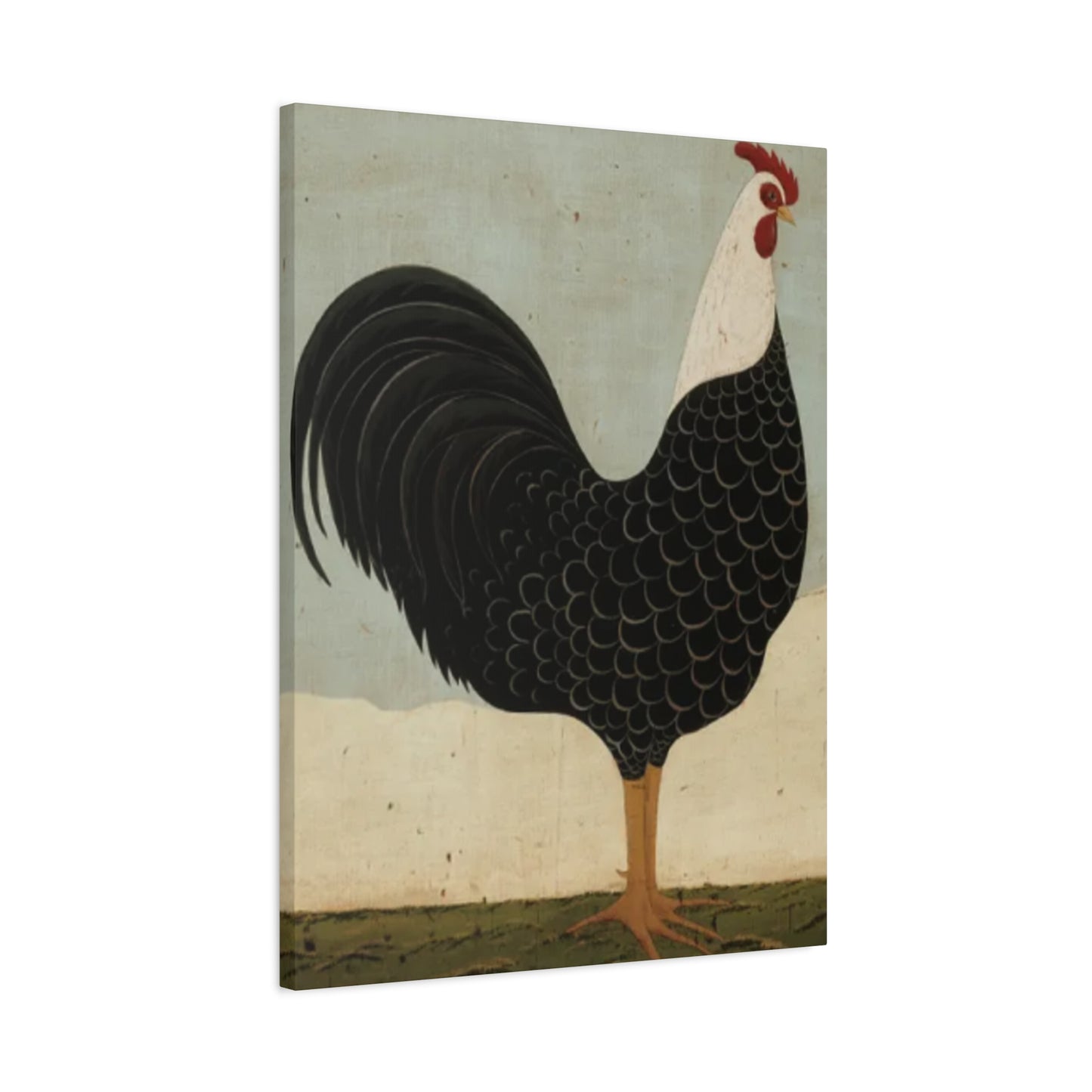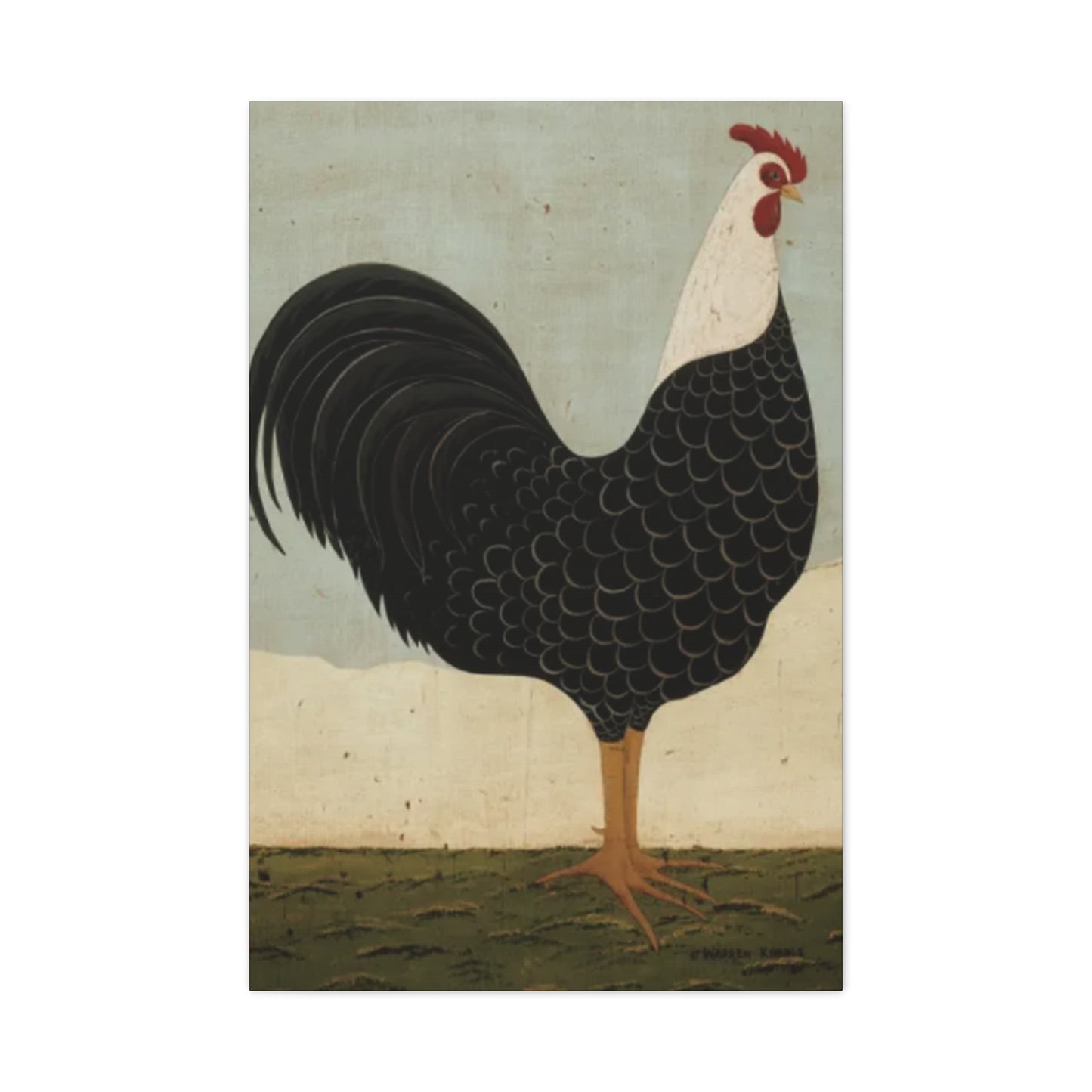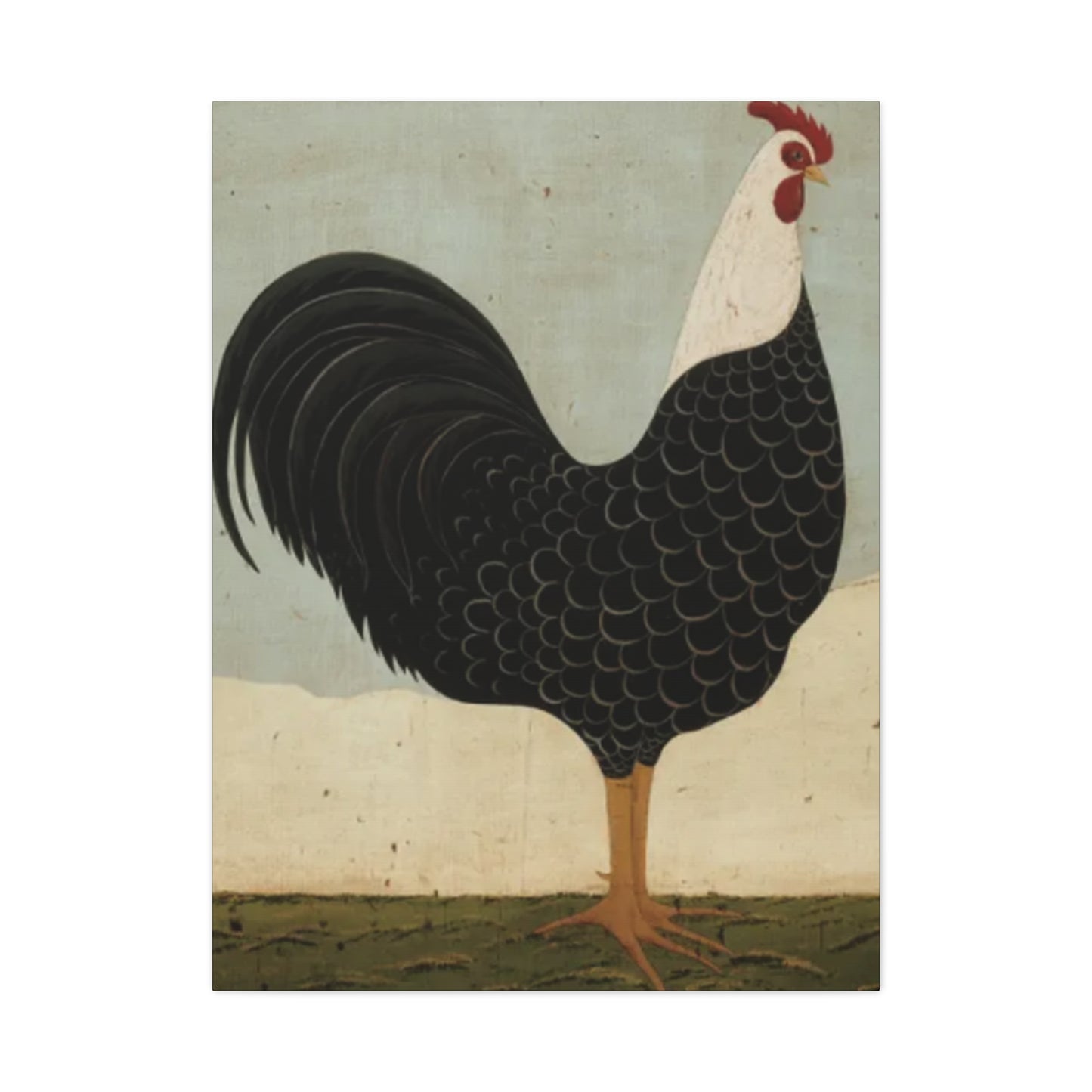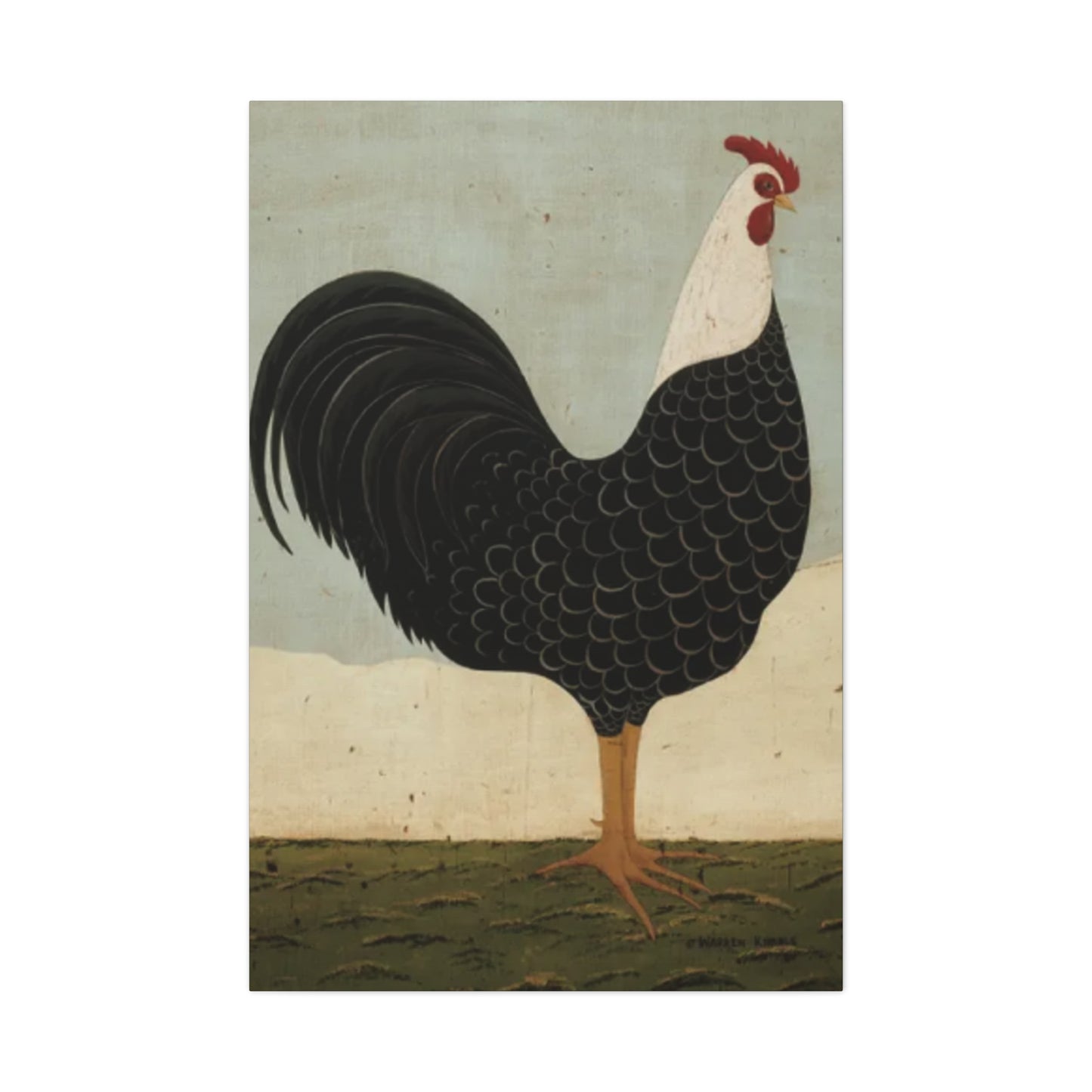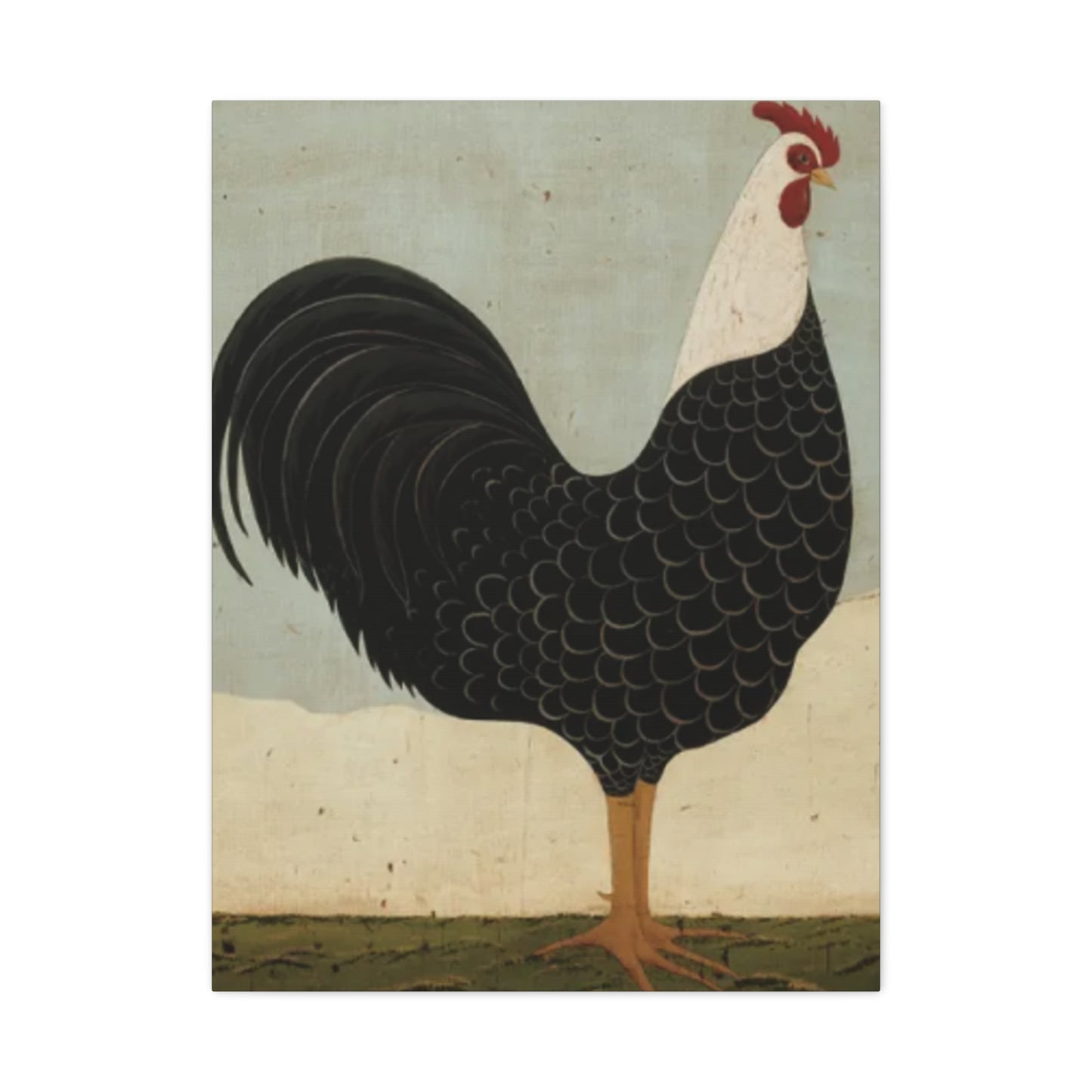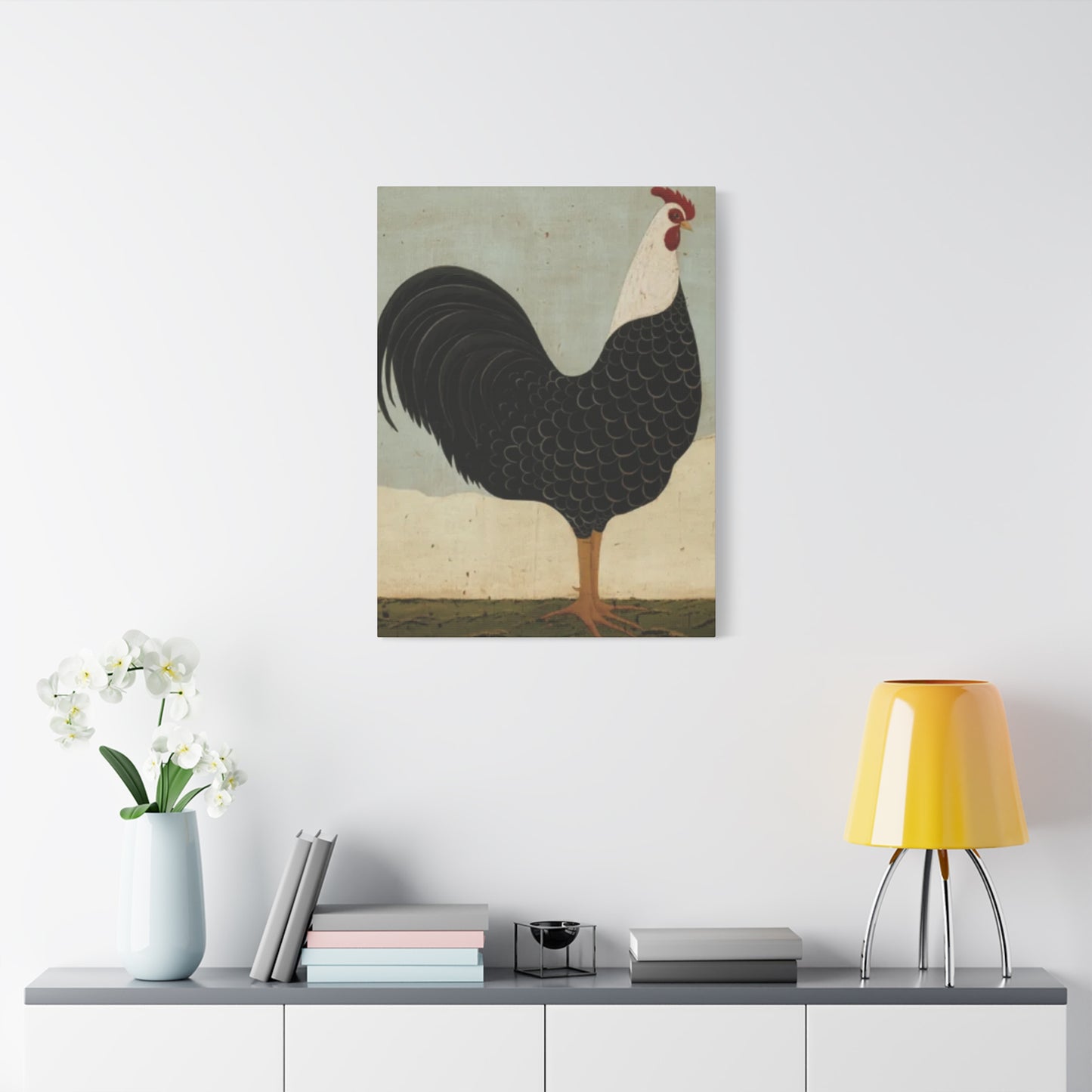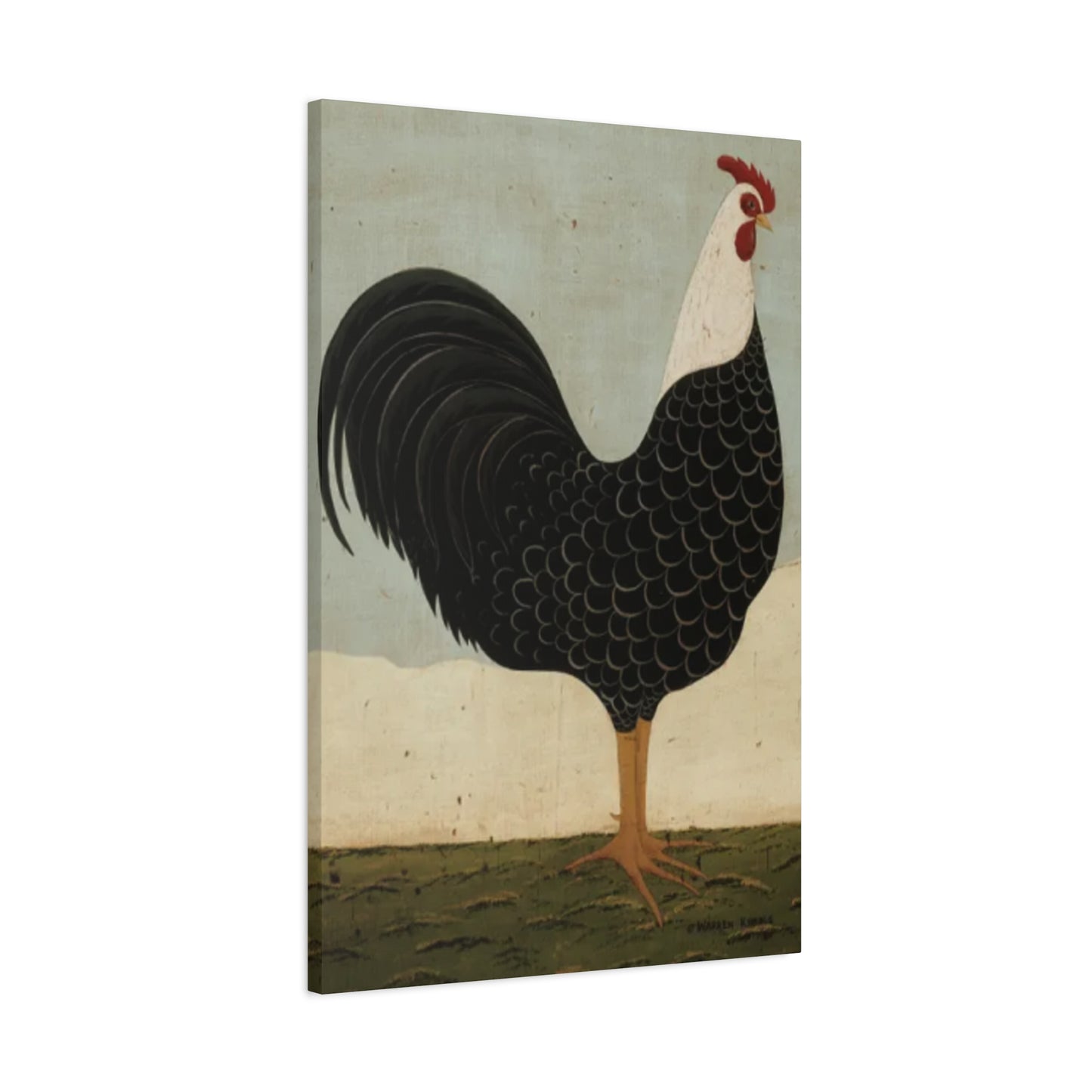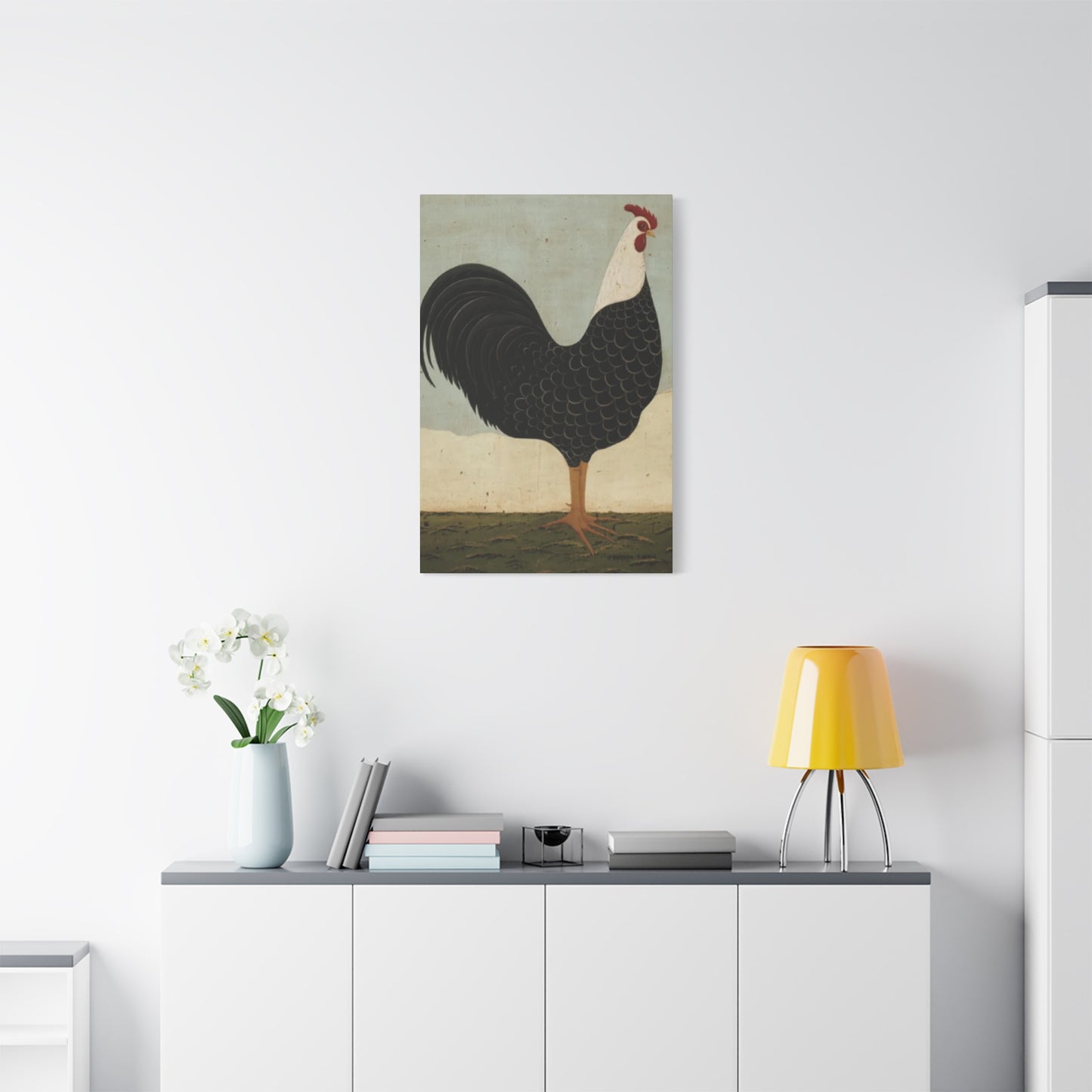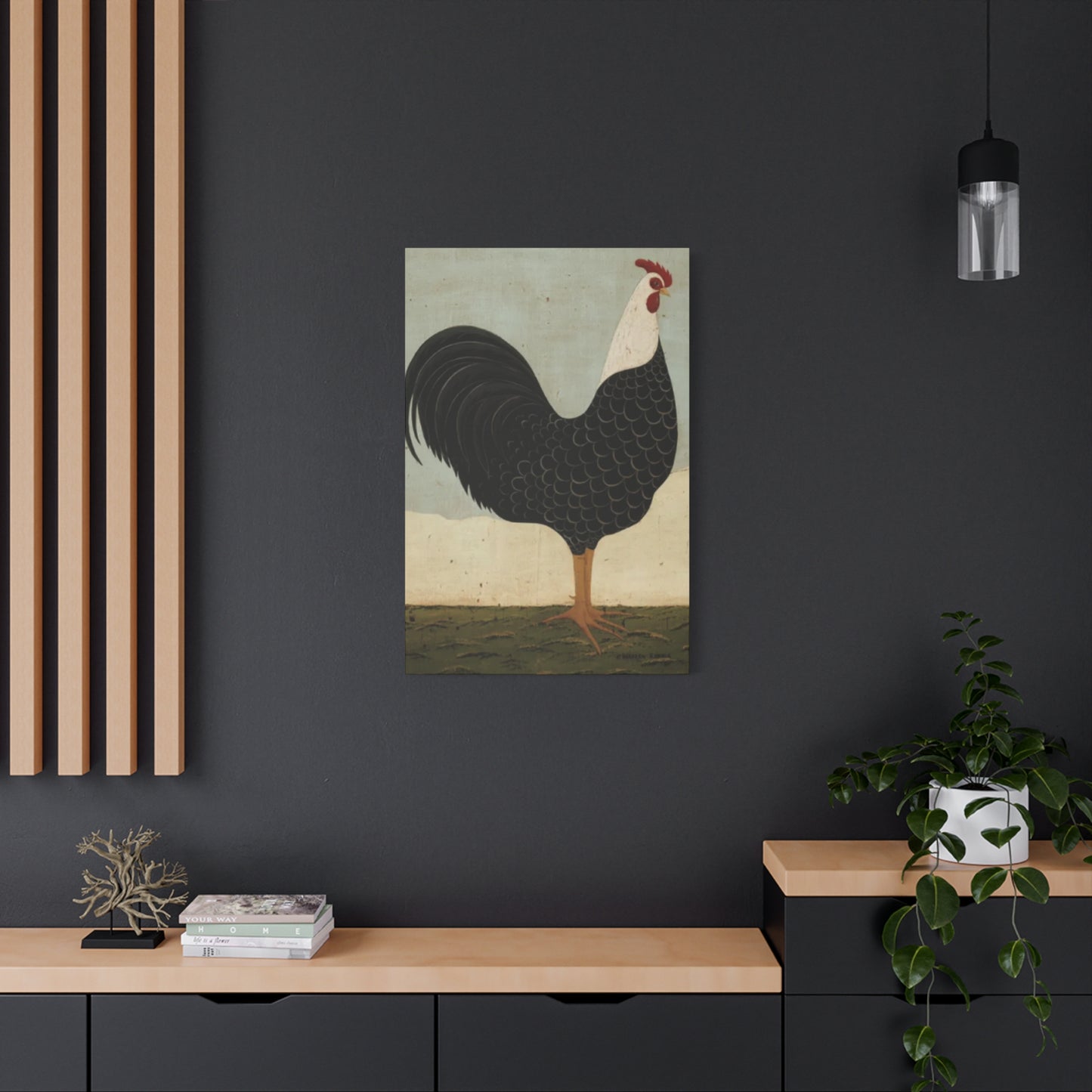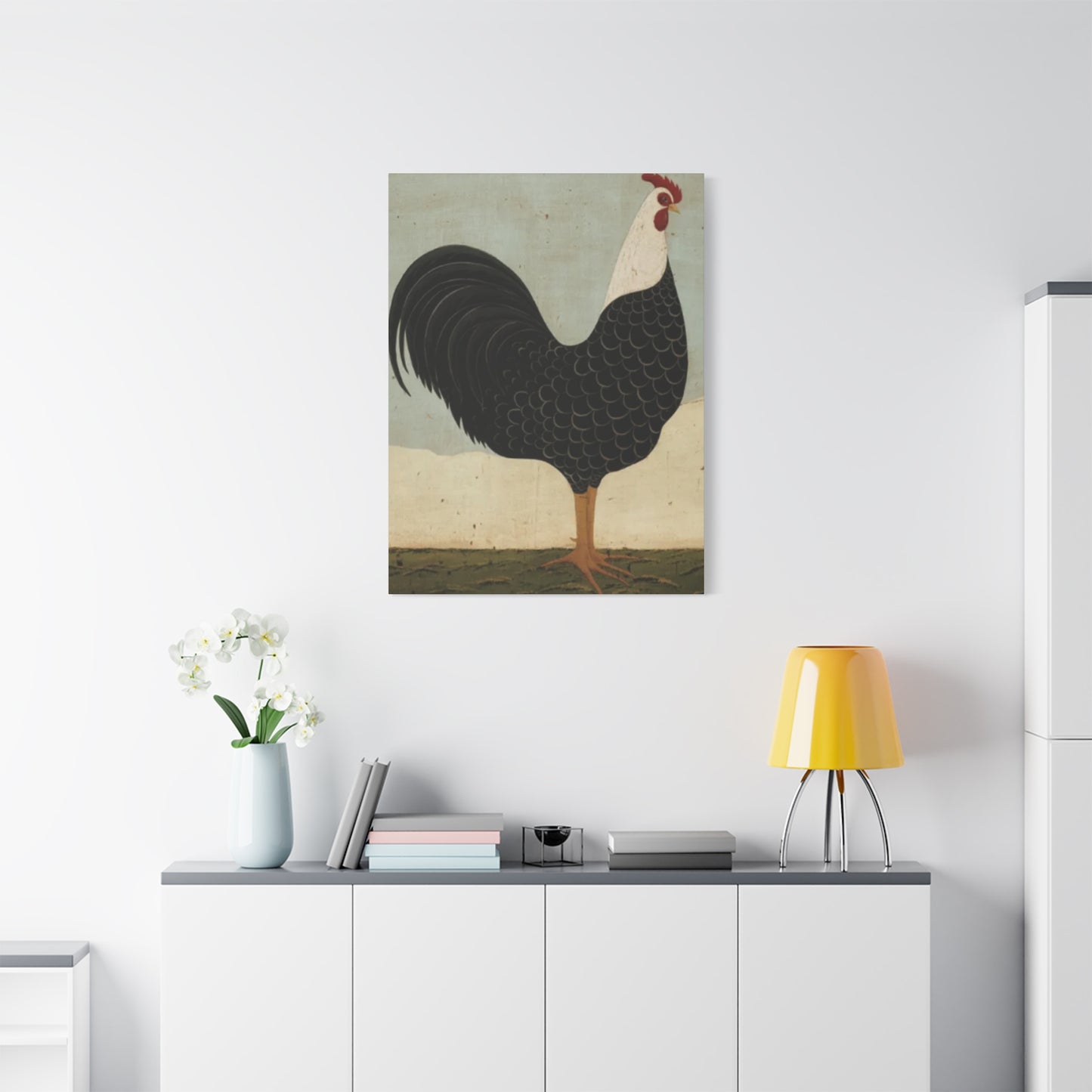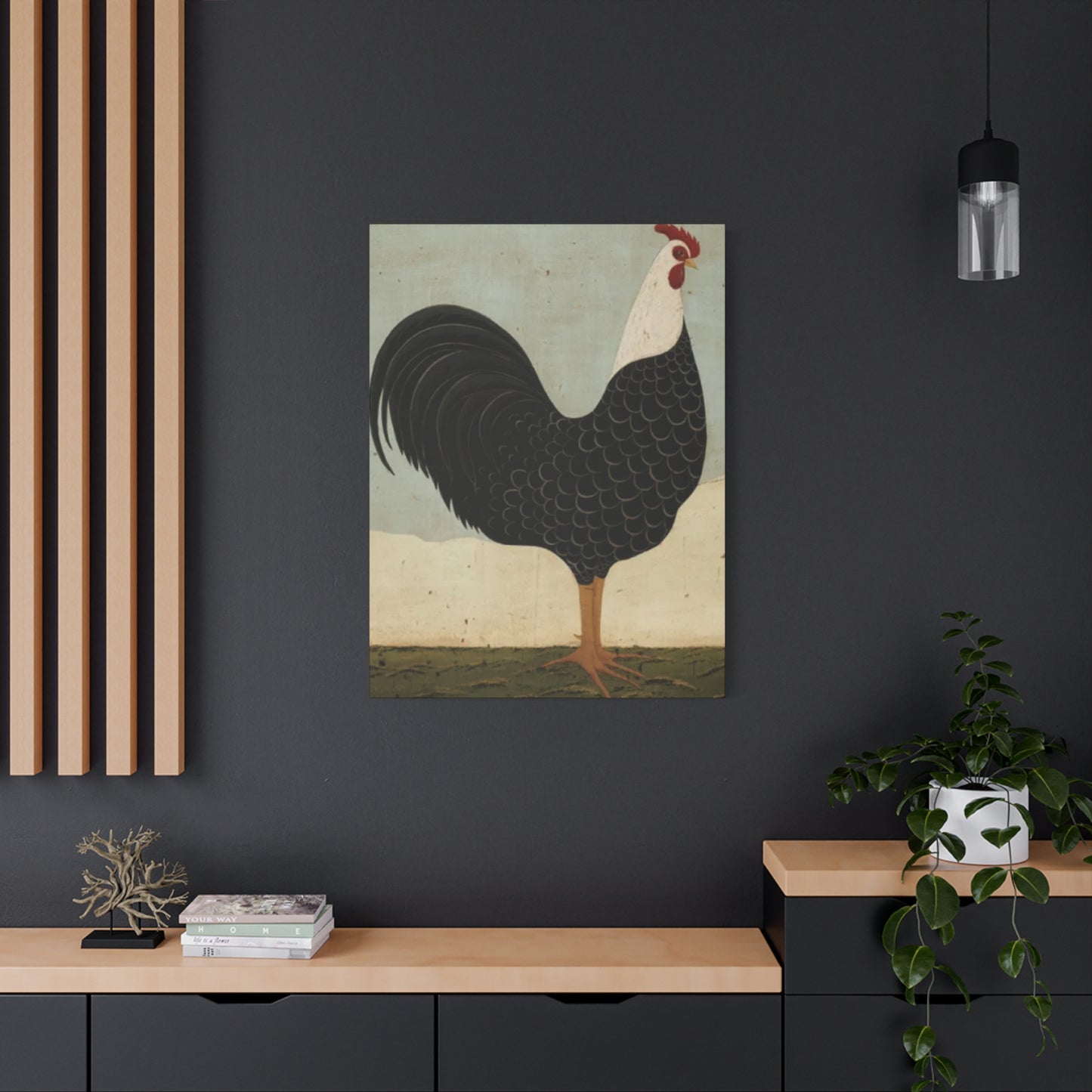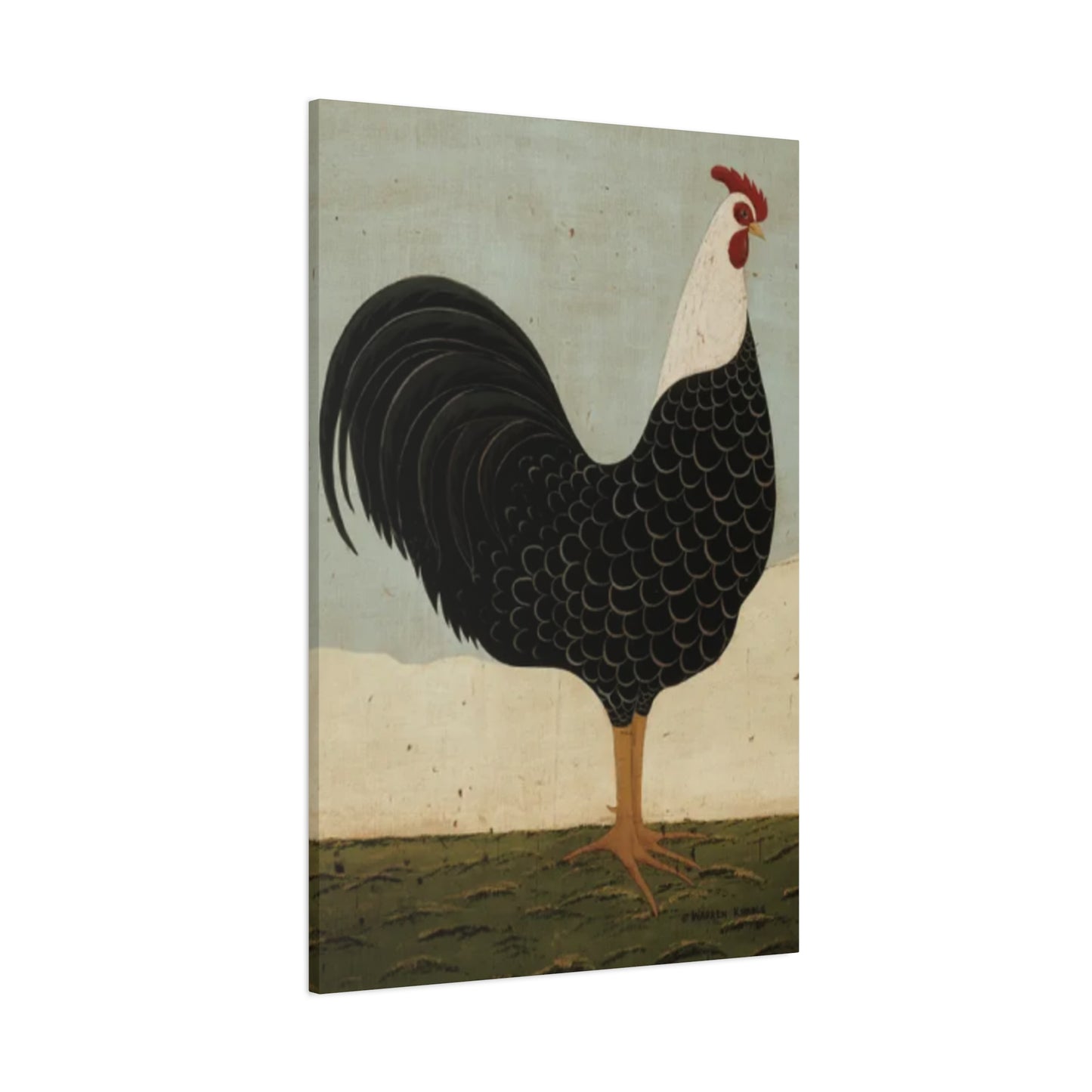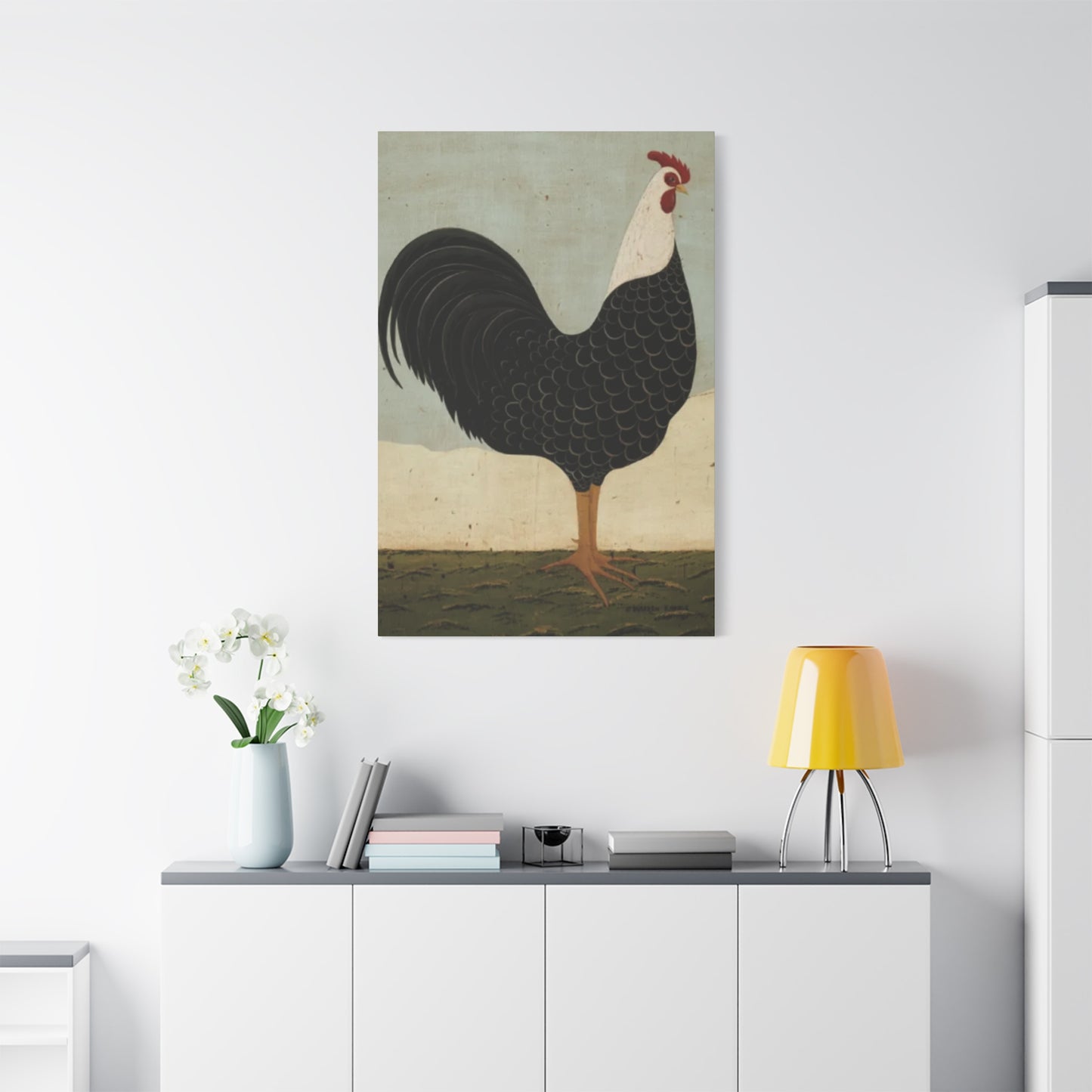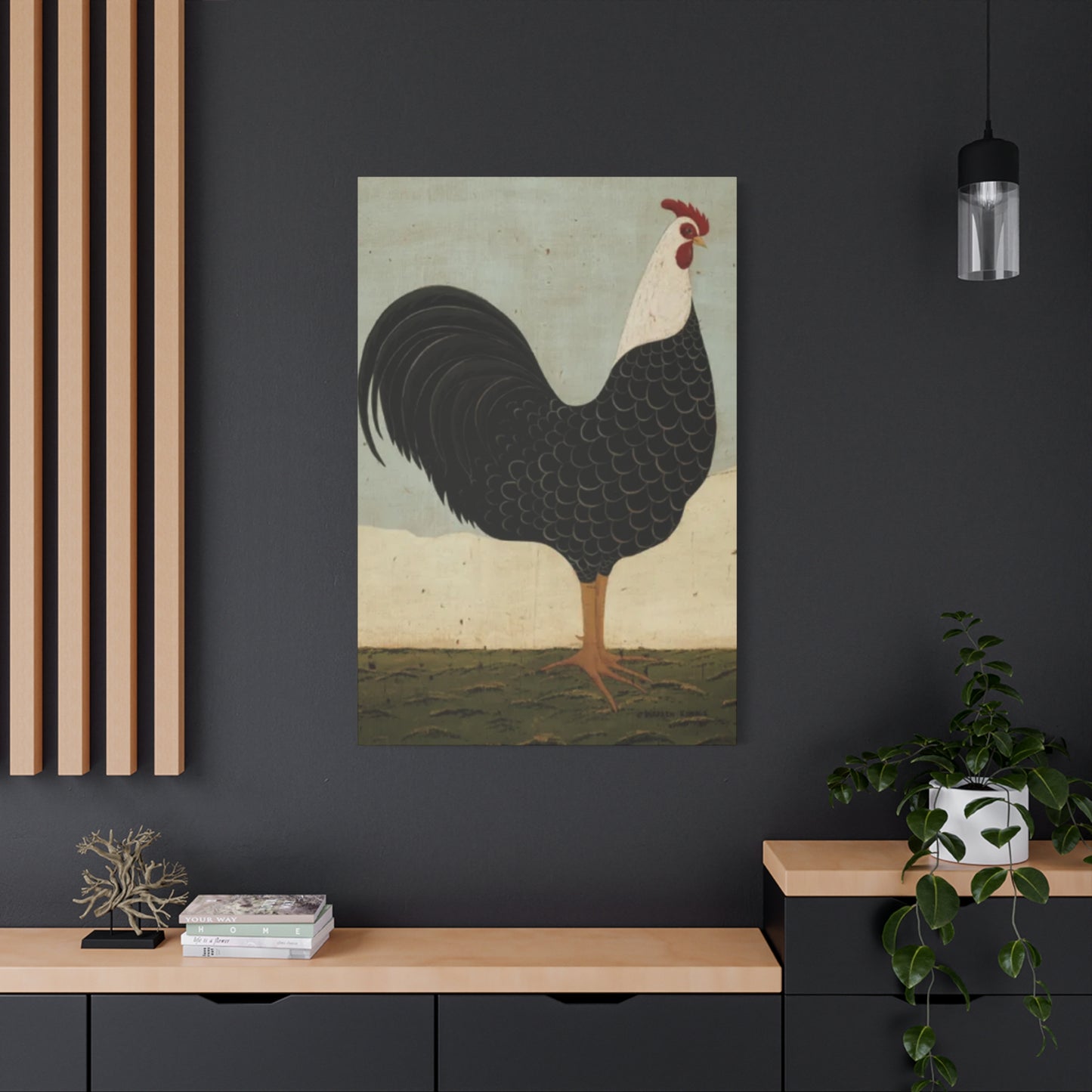Elevating Interior Spaces with Black Chicken Kimble Warren Wall Art Canvas Prints
Black chicken Kimble Warren wall art canvas prints represent a sophisticated fusion of contemporary artistry and timeless design principles that have revolutionized modern interior decoration. These exceptional pieces showcase the remarkable talent of emerging and established artists who specialize in avian-themed artwork, particularly focusing on the striking visual appeal of black chickens rendered in various artistic styles. The popularity of these canvas prints has surged dramatically in recent years, as homeowners and interior designers increasingly recognize their potential to serve as powerful focal points in residential and commercial spaces alike.
The artistic movement surrounding black chicken imagery has deep roots in both traditional folk art and contemporary abstract expressionism. Artists like Kimble Warren have pioneered techniques that transform simple barnyard subjects into compelling visual narratives that speak to themes of domesticity, rural heritage, and the beauty found in everyday agricultural life. These canvas prints offer viewers an opportunity to connect with pastoral traditions while simultaneously embracing modern aesthetic sensibilities that complement a wide range of interior design styles from farmhouse chic to industrial minimalism.
Canvas printing technology has evolved significantly over the past decade, enabling artists to reproduce their original works with unprecedented accuracy and detail. High-resolution digital printing processes ensure that every brushstroke, color gradient, and textural element of the original artwork is faithfully captured on premium canvas materials. This technological advancement has made it possible for art enthusiasts to access museum-quality reproductions at affordable price points, democratizing access to sophisticated artwork that was previously available only to collectors with substantial budgets.
The versatility of black chicken Kimble Warren wall art canvas prints extends beyond their aesthetic appeal to encompass their practical applications in various interior design scenarios. These pieces work exceptionally well in kitchen spaces, where their agricultural themes create natural harmony with culinary environments. Dining rooms benefit from the conversational qualities these artworks provide, offering guests engaging visual elements that can spark discussions about art, farming traditions, or rural lifestyle choices. Living areas gain character and personality through the strategic placement of these canvas prints, which serve as excellent alternatives to mass-produced decorative elements.
Historical Context and Artistic Evolution of Chicken-Themed Artwork
The representation of chickens in visual art dates back thousands of years, with archaeological evidence showing poultry imagery in ancient Egyptian tomb paintings, Greek pottery, and Roman mosaics. These early depictions typically focused on chickens as symbols of fertility, dawn, and domestic prosperity. The transition from purely functional or religious symbolism to aesthetic appreciation occurred gradually throughout the Renaissance period, when artists began incorporating barnyard animals into pastoral scenes that celebrated rural life and agricultural abundance.
During the Dutch Golden Age of the 17th century, artists like Melchior d'Hondecoeter elevated chicken portraiture to new heights of technical sophistication and artistic merit. These master painters demonstrated that humble farm animals could serve as compelling subjects for serious artistic endeavor, establishing precedents that continue to influence contemporary artists working with similar themes. The meticulous attention to feather texture, anatomical accuracy, and behavioral characteristics seen in these historical works provides foundational inspiration for modern interpretations like those found in black chicken Kimble Warren wall art canvas prints.
The 19th century witnessed a renewed interest in agricultural themes as industrialization prompted nostalgia for simpler rural lifestyles. Artists of this period, including members of the Barbizon School and American Regionalist painters, frequently incorporated chicken imagery into their compositions as symbols of authentic country living. This romanticization of farm life established emotional associations between poultry imagery and concepts of home, security, and traditional values that continue to resonate with contemporary audiences.
Modern and contemporary art movements have recontextualized chicken imagery in various ways, from Andy Warhol's commercial appropriations to outsider artists' folk interpretations. The emergence of black chicken motifs specifically reflects broader cultural trends toward celebrating diversity and finding beauty in unexpected places. Artists working with black chicken subjects often explore themes related to resilience, uniqueness, and the inherent dignity found in all living creatures, regardless of their conventional status or economic value.
The development of specialized printing techniques for canvas reproduction has enabled contemporary artists to reach broader audiences while maintaining the integrity of their original visions. Digital color management systems ensure accurate reproduction of subtle tonal variations that are particularly crucial when working with predominantly black subjects, where subtle gradations and textural details become essential compositional elements.
Contemporary Artists and the Kimble Warren Aesthetic
Kimble Warren represents a new generation of artists who have successfully bridged the gap between traditional representational techniques and contemporary design sensibilities. This artist's approach to black chicken imagery demonstrates sophisticated understanding of color theory, compositional balance, and the psychological impact of animal portraiture on human viewers. The distinctive style associated with Kimble Warren's work emphasizes clean lines, strategic use of negative space, and careful attention to the inherent character and personality of individual birds.
The artistic philosophy underlying these works reflects broader cultural movements toward mindfulness, sustainability, and reconnection with natural cycles. By elevating humble farm animals to the status of fine art subjects, artists like Kimble Warren challenge viewers to reconsider their relationships with agriculture, food production, and the natural world. This conceptual depth adds layers of meaning to what might otherwise be purely decorative objects, transforming simple wall hangings into thought-provoking conversation pieces.
Technical excellence characterizes the best examples of black chicken artwork, requiring artists to master challenging aspects of rendering dark subjects against varied backgrounds. The successful depiction of black feathers demands sophisticated understanding of how light interacts with different surface textures, creating highlights and shadows that reveal form while maintaining visual interest. Artists must balance realistic representation with stylistic interpretation, creating works that are both scientifically accurate and emotionally engaging.
Color palette choices become particularly critical when working with black chicken subjects, as surrounding colors must complement and enhance the central figure without overwhelming its visual impact. Successful compositions often employ earth tones, muted pastels, or high-contrast backgrounds that allow the black chicken to command attention while maintaining overall harmonic balance. These color relationships contribute significantly to the decorative potential of finished canvas prints.
The scale and proportion of black chicken subjects within their compositions require careful consideration of intended display contexts. Wall art canvas prints must work effectively in various room sizes and viewing distances, necessitating compositional adjustments that ensure visual impact regardless of installation parameters. Artists experienced in creating work specifically for reproduction understand these requirements and design their original pieces accordingly.
Specifications and Canvas Print Quality Standards
Premium canvas materials form the foundation of high-quality black chicken Kimble Warren wall art reproductions, with cotton-polyester blend fabrics providing optimal durability and color retention characteristics. These specially manufactured canvases feature consistent weave patterns that minimize texture interference while providing sufficient tooth to hold ink particles securely during the printing process. The weight and thickness of canvas materials directly impact the longevity and professional appearance of finished prints.
Archival ink formulations ensure color stability and fade resistance over extended periods, even when prints are displayed in areas with moderate light exposure. Pigment-based inks offer superior longevity compared to dye-based alternatives, maintaining color accuracy for decades when proper display conditions are maintained. UV-resistant additives in premium ink formulations provide additional protection against environmental factors that could compromise print quality over time.
Stretching and mounting procedures significantly influence the final presentation quality of canvas prints, requiring precision installation techniques that eliminate wrinkles, sagging, or uneven tension distribution. Professional-grade stretcher bars manufactured from kiln-dried hardwoods provide stable support structures that resist warping and maintain proper canvas tension throughout varying environmental conditions. Corner reinforcements and cross-bracing elements add structural integrity for larger format prints.
Color management protocols throughout the printing process ensure faithful reproduction of original artwork characteristics, employing calibrated monitor systems and standardized lighting conditions for quality assessment. Proof printing procedures allow for final adjustments before full production runs, minimizing variations between different print batches. These quality control measures are particularly important for black chicken imagery, where subtle tonal variations contribute significantly to overall visual impact.
Protective coating applications provide additional safeguards against moisture, dust, and minor physical damage while maintaining the natural texture and appearance of canvas surfaces. Water-resistant treatments help prevent damage from humidity fluctuations while allowing the canvas to breathe naturally. These protective measures extend the practical lifespan of wall art installations without requiring frequent maintenance or replacement.
Interior Design Applications and Room-Specific Considerations
Kitchen environments provide ideal settings for black chicken Kimble Warren wall art canvas prints, where agricultural themes create natural thematic coherence with food preparation and dining activities. The practical considerations of kitchen installations require attention to moisture levels, temperature variations, and exposure to cooking-related airborne particles. Strategic placement away from direct heat sources and steam-producing appliances helps preserve print quality while maximizing visual impact.
Dining room installations benefit from the conversational qualities inherent in well-executed animal portraiture, providing guests with engaging focal points that encourage discussion and social interaction. Scale considerations become particularly important in formal dining contexts, where artwork must complement rather than compete with table settings, lighting fixtures, and architectural features. Multiple smaller pieces can create gallery wall arrangements that distribute visual interest across larger wall surfaces.
Living room applications offer the greatest flexibility for creative installation approaches, accommodating various sizes and grouping arrangements that complement existing furniture and decorative elements. The neutral color palettes commonly associated with black chicken artwork integrate well with both contemporary and traditional furnishing styles. Consideration of viewing angles and seating arrangements helps optimize placement for maximum appreciation by room occupants.
Bedroom installations require sensitivity to the psychological impact of imagery choices, as animal subjects can influence sleep quality and emotional well-being. Black chicken artwork generally provides calming, reassuring associations that support restful environments while adding personality and visual interest to private spaces. Size and placement considerations should account for furniture arrangements and lighting conditions that change throughout daily cycles.
Office and commercial applications leverage the professional yet approachable qualities of well-executed animal portraiture to create welcoming environments that reflect values related to authenticity, tradition, and quality. Healthcare facilities, restaurants, and retail establishments frequently incorporate agricultural themes to establish emotional connections with clients and customers. Durability and maintenance requirements become particularly important in high-traffic commercial contexts.
Color Theory and Aesthetic Harmony in Black Chicken Artwork
The predominant use of black as a primary color in chicken artwork presents unique challenges and opportunities for creating visually compelling compositions that work effectively within diverse interior color schemes. Black serves as both a neutral element that can complement virtually any color palette and a dramatic focal point that commands attention within its visual context. Understanding how black interacts with surrounding colors becomes essential for successful integration into existing decorative schemes.
Complementary color relationships offer powerful tools for enhancing the visual impact of black chicken subjects, with warm yellows, oranges, and reds creating vibrant contrasts that energize compositions while maintaining harmonic balance. Cool blues, greens, and purples provide more subtle complementary effects that support sophisticated, refined aesthetic approaches. The intensity and saturation of complementary colors must be carefully balanced to avoid overwhelming the central subject matter.
Analogous color schemes employing closely related hues create cohesive visual experiences that emphasize unity and tranquility over dramatic contrast. Earth tones, including various browns, tans, and muted greens, naturally harmonize with black chicken subjects while reinforcing agricultural and natural themes. These subtle color relationships support contemplative viewing experiences that encourage extended appreciation of artistic details.
Monochromatic approaches utilizing various shades and tints of single color families can create sophisticated compositions that rely on value relationships and textural contrasts rather than color variety for visual interest. Black chicken subjects work particularly well within monochromatic schemes based on warm grays, sepia tones, or muted earth colors that emphasize form and composition over chromatic excitement.
The psychological impact of color choices extends beyond purely aesthetic considerations to influence emotional responses and behavioral patterns in spaces where artwork is displayed. Warm color palettes tend to create welcoming, energetic environments that encourage social interaction, while cool colors promote calm, reflective moods that support concentration and relaxation. Understanding these psychological associations helps inform appropriate color selections for specific room functions and user needs.
Sizing Guidelines and Proportional Relationships
Determining appropriate sizes for black chicken Kimble Warren wall art canvas prints requires careful analysis of room dimensions, furniture scale, and viewing distances to ensure optimal visual impact without overwhelming existing design elements. Standard sizing categories provide useful starting points for selection decisions, with small prints (8x10 to 16x20 inches) working well for intimate spaces or grouped arrangements, medium prints (18x24 to 24x36 inches) serving as effective focal points for most residential applications, and large prints (30x40 inches and above) creating dramatic statements in spacious environments.
Wall space calculations help determine maximum effective sizes for specific installation locations, accounting for furniture placement, architectural features, and other decorative elements that compete for visual attention. The rule of thirds provides a useful guideline for positioning artwork relative to furniture pieces, with print centers typically positioned at 57-60 inches from floor level to align with average viewing heights. These measurements may require adjustment based on ceiling heights and room proportions.
Multiple print arrangements offer opportunities to create custom gallery walls that distribute visual weight across larger surfaces while maintaining thematic coherence. Successful groupings typically employ consistent spacing between individual pieces, with 2-3 inches providing appropriate separation for most residential applications. Larger commercial spaces may accommodate wider spacing intervals that accommodate extended viewing distances and architectural scales.
Proportional relationships between artwork and surrounding design elements influence perceived balance and harmony within room compositions. Prints that are too small relative to wall space or furniture may appear insignificant, while oversized pieces can dominate environments in ways that disrupt overall design coherence. Professional interior designers often recommend artwork widths that measure 60-75% of underlying furniture dimensions for optimal proportional balance.
Custom sizing options available through specialized printing services allow for precise matching of artwork dimensions to specific installation requirements, accommodating unusual wall configurations, architectural constraints, or unique design visions. These services typically offer sizing flexibility within technical limitations of printing equipment and canvas material capabilities, enabling personalized solutions that optimize visual impact for individual spaces.
Framing Options and Presentation Techniques
Canvas print presentation methods significantly impact both aesthetic appeal and longevity of black chicken Kimble Warren wall art installations, with various framing and mounting options available to complement different interior design approaches and budget considerations. Gallery wrap mounting creates clean, contemporary presentations that eliminate traditional frame elements while providing professional finishing touches. This approach works particularly well in modern and minimalist design contexts where uncluttered visual presentation takes priority.
Traditional framing options offer opportunities to integrate canvas prints into more formal or classical design schemes through the selection of appropriate frame materials, colors, and profiles. Wood frames in natural finishes complement agricultural themes while providing structural protection and visual boundaries that help define artwork within complex wall compositions. Metal frames offer contemporary alternatives that work well in industrial or modern design contexts.
Matting applications can enhance the presentation of smaller canvas prints while providing color coordination opportunities that tie artwork into broader room color schemes. Mat colors should complement rather than compete with the artwork itself, with neutral tones typically providing the safest choices for long-term satisfaction. The width of mat borders influences perceived scale and importance of framed pieces within their visual contexts.
Float mounting techniques create sophisticated presentations that emphasize the canvas texture and construction while providing subtle shadow effects that add dimensional interest. This approach works particularly well for black chicken artwork where textural qualities contribute significantly to overall visual appeal. Float mounting typically requires custom framing services but produces distinctive results that justify additional investment.
Protective glazing considerations balance conservation benefits against potential visual interference from reflections and texture suppression. Museum-quality glass or acrylic glazing materials offer superior protection against environmental hazards while minimizing visual distortion. Anti-reflective coatings help reduce glare issues in brightly lit environments, though many canvas prints are displayed without glazing to preserve their natural textural qualities.
Installation Techniques and Hardware Considerations
Proper installation procedures ensure secure mounting while minimizing risk of damage to both artwork and wall surfaces, requiring appropriate hardware selection based on print size, weight, and wall construction materials. Standard drywall installations typically employ picture hanging strips or wall anchors rated for appropriate weight loads, with safety margins accounting for dynamic forces from air circulation, building movement, and accidental contact.
Stud mounting provides maximum security for larger or heavier canvas prints, utilizing wood screws driven directly into structural framing members. Electronic stud finders help locate appropriate mounting points, though manual verification techniques provide additional confirmation of structural adequacy. Proper screw selection considers both holding power and aesthetic impact of visible hardware elements.
Level installation requires precise measurement and alignment procedures to ensure professional appearance and visual harmony with room architecture. Laser levels provide accurate reference lines for multiple print installations, while traditional bubble levels suffice for single piece mounting. Template creation using paper cutouts helps visualize final positioning before making permanent mounting holes.
Wall surface preparation may require patching, priming, or texture matching to ensure clean installation backgrounds that complement rather than detract from artwork presentation. Paint touch-ups should be completed before installation to avoid accidental damage to prints during finishing work. Surface cleaning removes dust and debris that could interfere with adhesive mounting systems.
Maintenance access considerations influence hardware selection and positioning choices, as periodic cleaning and inspection requirements may necessitate temporary removal capabilities. Quick-release hardware systems facilitate maintenance activities while providing secure mounting during normal display periods. Documentation of installation details helps future maintenance and relocation efforts.
Lighting Design and Display Optimization
Appropriate lighting design dramatically influences the visual impact and appreciation of black chicken Kimble Warren wall art canvas prints, requiring careful consideration of light source characteristics, positioning, and intensity levels to achieve optimal viewing conditions without compromising artwork longevity. Natural lighting provides the most accurate color representation but varies throughout daily and seasonal cycles, necessitating supplementary artificial lighting systems for consistent viewing experiences.
LED lighting systems offer energy-efficient solutions with excellent color rendering capabilities and minimal heat generation that protects canvas materials from thermal damage. Adjustable color temperature options allow fine-tuning of lighting characteristics to complement specific color palettes and room functions. Dimming capabilities provide flexibility for different viewing preferences and ambient lighting requirements.
Track lighting installations enable precise positioning and angling of individual light fixtures to eliminate shadows and reflections while providing even illumination across artwork surfaces. Multiple fixture arrangements can accommodate various print sizes and grouping configurations without requiring extensive electrical modifications. Track systems also facilitate easy repositioning when artwork arrangements change.
Picture lighting fixtures mounted directly on frames or walls provide dedicated illumination that emphasizes artwork importance while creating intimate viewing experiences. Battery-powered options eliminate wiring requirements for flexible installation in various locations. Traditional cord-and-plug fixtures offer reliable operation with standard electrical systems while maintaining professional appearance.
Lighting control systems integrate artwork illumination with broader room lighting schemes, enabling scene programming that optimizes viewing conditions for different activities and times of day. Smart home integration allows remote control and scheduling capabilities that enhance both convenience and energy efficiency. Daylight sensors can automatically adjust artificial lighting levels to maintain consistent viewing conditions regardless of natural light variations.
Maintenance and Conservation Practices
Regular maintenance procedures help preserve the appearance and longevity of black chicken Kimble Warren wall art canvas prints, requiring gentle cleaning techniques that remove accumulated dust and debris without damaging ink deposits or canvas fibers. Soft-bristled brushes or microfiber cloths provide safe cleaning tools for routine maintenance activities. Vacuum cleaners with brush attachments can remove loose debris from textured canvas surfaces when used with appropriate care and low suction settings.
Environmental monitoring helps identify conditions that could threaten artwork preservation, including excessive humidity, temperature fluctuations, and direct sunlight exposure. Digital hygrometers provide accurate humidity readings that help maintain optimal conditions between 45-55% relative humidity. Thermometers track temperature variations that could cause expansion and contraction cycles potentially damaging to canvas materials.
UV protection measures reduce cumulative damage from both natural and artificial light sources that can cause fading and color shifts over extended exposure periods. Window films, protective glazing, and UV-filtering light bulbs provide various levels of protection appropriate for different installation contexts. Regular rotation of artwork positions can distribute light exposure more evenly across print surfaces.
Professional conservation services address more serious damage or deterioration issues that exceed the capabilities of routine maintenance procedures. Canvas repairs, color restoration, and structural reinforcement require specialized knowledge and materials best provided by qualified conservators. Early intervention prevents minor problems from developing into more serious damage requiring extensive restoration work.
Documentation practices including installation photos, maintenance records, and condition reports help track changes over time and inform future conservation decisions. Digital photography provides detailed records of artwork condition that can reveal gradual changes not apparent during routine viewing. Maintenance schedules ensure regular attention to preservation requirements without relying on memory or informal observation.
Market Trends and Collecting Considerations
The market for black chicken Kimble Warren wall art canvas prints reflects broader trends in home decoration toward personalized, meaningful artwork that expresses individual tastes and values rather than following mass-market design prescriptions. Consumer preferences increasingly favor unique pieces that tell stories or represent personal connections to rural traditions, agricultural heritage, or simply appreciation for the beauty found in everyday subjects.
Limited edition prints and artist-signed reproductions command premium prices within the collecting market, offering opportunities for investment appreciation while providing immediate decorative benefits. Authentication procedures help verify the legitimacy of limited edition claims and artist signatures that contribute to market value. Certificates of authenticity provide documentation that supports both current enjoyment and future resale potential.
Emerging artists working with black chicken themes present opportunities for early collection building at accessible price points while supporting artistic development and innovation. Social media platforms and online galleries provide direct access to artists and their work, eliminating traditional gallery markup while enabling personal relationships between collectors and creators. This direct connection adds personal significance that enhances collecting satisfaction beyond purely financial considerations.
Print production techniques continue to evolve with advancing technology, offering improved quality and expanded format options that benefit both artists and collectors. Larger format capabilities, enhanced color accuracy, and improved durability characteristics represent ongoing improvements in reproduction quality. These technical advances help preserve the artistic vision and ensure lasting satisfaction with purchase decisions.
Secondary market activities including resale, trading, and gift-giving create ongoing value circulation that benefits the broader collecting community while providing liquidity options for individual collectors. Online marketplaces facilitate these transactions while providing price transparency that helps establish fair market values. Proper documentation and condition assessment become crucial factors in secondary market success.
Cultural Significance and Symbolic Interpretations
Black chicken imagery carries diverse cultural meanings across different traditions and historical contexts, contributing depth and richness to contemporary artistic interpretations that extend beyond purely decorative applications. In many agricultural societies, chickens represent abundance, fertility, and domestic security, associations that translate into positive emotional responses when these themes appear in home decoration contexts.
The specific choice of black chickens over more common color variations adds layers of meaning related to uniqueness, rarity, and the appreciation of less conventional beauty standards. Black chicken breeds, while less common than their lighter-colored counterparts, often possess distinctive characteristics and historical significance that appeal to viewers interested in agricultural heritage and biodiversity preservation.
Folkloric traditions from various cultures associate black chickens with different symbolic meanings, ranging from protection and good fortune to mystery and transformation. These cultural associations can influence viewer responses to artwork and contribute to the personal significance individuals attach to their decorative choices. Understanding these symbolic dimensions helps inform selection decisions and installation contexts.
Contemporary interpretations of chicken imagery often explore themes related to sustainable living, local food systems, and reconnection with natural cycles that have been disrupted by industrialization and urbanization. Artists working with these subjects frequently intend to provoke consideration of humanity's relationship with domestic animals and food production systems. These conceptual frameworks add intellectual depth to what might otherwise be purely decorative objects.
The elevation of humble farm animals to fine art status reflects broader cultural movements toward finding beauty and meaning in everyday subjects rather than relying exclusively on traditional artistic subjects drawn from mythology, history, or exotic locales. This democratization of artistic subject matter parallels broader social trends toward valuing diverse perspectives and experiences previously marginalized in mainstream cultural discourse.
Regional Variations and Artistic Influences
Different geographic regions have developed distinctive approaches to chicken-themed artwork based on local breeds, agricultural traditions, and cultural preferences that influence color palettes, compositional styles, and thematic emphases. American regionalist traditions emphasize pastoral idealism and nostalgic connections to agricultural heritage, while European approaches often incorporate more sophisticated color theories and compositional techniques derived from centuries of artistic development.
Climate and environmental factors influence both chicken breed characteristics and artistic interpretation approaches, with different regions favoring visual elements that reflect local conditions and cultural adaptations. Mediterranean influences emphasize warm color palettes and outdoor settings, while Northern European traditions favor more muted tones and domestic interior contexts that reflect different lifestyle patterns and aesthetic preferences.
Urban versus rural artistic perspectives create interesting contrasts in how chicken subjects are interpreted and presented, with city-based artists often emphasizing exotic or romanticized aspects of farm life while rural artists draw from direct experience and practical knowledge of poultry behavior and characteristics. These different viewpoints contribute to artistic diversity that enriches the overall field of chicken-themed artwork.
Traditional folk art influences continue to shape contemporary interpretations through stylistic elements, color choices, and compositional approaches passed down through generations of regional artistic traditions. Pennsylvania Dutch, Mexican, and Scandinavian folk traditions each contribute distinctive visual languages that inform modern artistic approaches while maintaining connections to historical cultural expressions.
International market influences create cross-pollination of artistic ideas and techniques as artists and collectors encounter work from different cultural traditions through global communication networks and art market channels. This cultural exchange enriches artistic development while creating opportunities for fusion approaches that combine elements from multiple traditions in innovative ways.
Educational and Therapeutic Applications
Black chicken Kimble Warren wall art canvas prints serve educational purposes in various contexts, from agricultural education programs that use artwork to illustrate poultry breeds and farming practices to art appreciation courses that explore contemporary interpretations of traditional subjects. Visual learning approaches benefit from artwork that provides concrete examples of artistic techniques and thematic development.
Therapeutic applications include art therapy programs that use animal imagery to facilitate emotional expression and healing processes, with chicken subjects offering non-threatening focal points for discussion and reflection. The domestic, nurturing associations of chickens can provide comfort and security feelings that support therapeutic objectives in various treatment contexts.
Memory care facilities and senior living environments frequently incorporate familiar farm animal imagery to stimulate positive memories and encourage social interaction among residents who may have agricultural backgrounds or childhood experiences with poultry. The nostalgic qualities of chicken artwork can trigger reminiscence activities that support cognitive function and emotional well-being.
Children's educational environments benefit from chicken artwork that introduces concepts related to food production, animal care, and rural life in accessible, appealing visual formats. These images can support curriculum development in science, social studies, and art education programs while providing attractive decoration that enhances learning environments.
Workplace wellness programs increasingly recognize the benefits of nature-themed artwork in reducing stress and improving emotional well-being among employees. Chicken imagery provides connections to natural cycles and simpler lifestyles that can offer psychological relief from high-pressure work environments while maintaining professional appropriateness for business settings.
Integration and Digital Innovations
Digital printing technology continues to advance with improvements in resolution, color accuracy, and material compatibility that enhance the quality of black chicken Kimble Warren wall art canvas prints. High-definition imaging systems capture increasingly fine details from original artwork while color management protocols ensure faithful reproduction across different printing systems and materials.
Online customization platforms enable customers to preview artwork in virtual room settings, adjust sizes and framing options, and create personalized arrangements before making purchase decisions. Augmented reality applications allow viewers to position artwork virtually within their actual room environments using smartphone cameras, improving selection confidence and reducing return rates.
Print-on-demand manufacturing systems reduce inventory requirements while enabling rapid fulfillment of custom orders in various sizes and format options. These systems also support limited production runs for emerging artists while maintaining quality standards comparable to traditional printing methods. Digital storage and retrieval systems preserve artwork files indefinitely, enabling reprinting as needed without quality degradation.
Smart home integration possibilities include digital displays that can rotate between different artworks or adjust presentation characteristics based on time of day, lighting conditions, or user preferences. While traditional canvas prints remain preferred for many applications, digital alternatives offer flexibility that appeals to some consumers and commercial applications.
Blockchain technology applications in art authentication and provenance tracking provide secure documentation of artwork origins and ownership history, supporting both collecting activities and resale markets. These technological tools help combat counterfeiting while providing transparency that builds consumer confidence in online art markets.
Sustainable Production and Environmental Considerations
Environmental sustainability concerns increasingly influence production methods for black chicken Kimble Warren wall art canvas prints, with manufacturers adopting eco-friendly materials and processes that reduce environmental impact while maintaining quality standards. Water-based inks offer reduced toxicity compared to solvent-based alternatives while providing excellent color reproduction and longevity characteristics.
Recycled and renewable canvas materials support sustainability objectives while meeting performance requirements for durability and print quality. Bamboo fiber canvases offer natural antimicrobial properties and rapid renewability, while recycled cotton blends reduce waste streams from textile industries. These alternative materials often provide unique textural characteristics that enhance artistic presentation.
Local production and distribution networks reduce transportation environmental impacts while supporting regional economic development and employment opportunities. Print-on-demand systems eliminate waste from overproduction while reducing storage and distribution energy requirements. These efficiency improvements benefit both environmental and economic sustainability.
Packaging materials and methods increasingly emphasize recyclable and biodegradable options that protect artwork during shipping while minimizing environmental impact. Minimal packaging approaches reduce material usage while maintaining adequate protection, and reusable packaging systems support multiple shipment cycles for commercial applications.
Carbon offset programs allow environmentally conscious consumers to neutralize shipping and production emissions through verified environmental improvement projects. These voluntary programs demonstrate corporate responsibility while enabling consumers to align their purchasing decisions with environmental values.
Quality Assessment and Selection Criteria
Evaluating the quality of black chicken Kimble Warren wall art canvas prints requires attention to multiple factors including print resolution, color accuracy, canvas material quality, and construction techniques that influence both immediate appearance and long-term durability. High-resolution printing produces sharp detail reproduction that maintains clarity when viewed at close distances, while lower resolution printing may show pixelation or soft focus effects.
Color accuracy assessment compares printed reproduction with original artwork or reference standards to identify any color shifts or tonal variations that could compromise artistic integrity. Professional color management systems and calibrated viewing conditions help ensure accurate assessment results that support informed purchasing decisions.
Canvas material quality indicators include fiber content, weave consistency, weight specifications, and surface preparation treatments that influence paint adhesion and longevity. Premium canvases typically feature consistent weave patterns without visible defects, appropriate thickness for intended applications, and surface treatments that optimize ink absorption and color saturation.
Construction quality evaluation examines stretching technique, corner construction, staple placement, and frame material quality that contribute to structural stability and professional appearance. Hand-stretched prints often demonstrate superior quality compared to machine-stretched alternatives, with tighter, more even tension distribution and neater corner finishing techniques.
Warranty and guarantee provisions indicate manufacturer confidence in product quality while providing consumer protection against defects or premature failure. Comprehensive warranties typically cover material defects, construction problems, and color fading for specified time periods, with clear terms for replacement or repair services.
Price Factors and Value Considerations
Pricing structures for black chicken Kimble Warren wall art canvas prints reflect various cost factors including artist reputation, print size, material quality, production techniques, and market demand characteristics that influence retail prices across different market segments. Limited edition prints typically command premium prices compared to open edition reproductions, with exclusivity creating additional value perception among collectors and decorators.
Size-based pricing reflects material and production cost differences, with larger prints requiring proportionally more materials and processing time while offering greater visual impact and decorative potential. Custom sizing options may include surcharges for non-standard dimensions that require special handling or setup procedures during manufacturing processes.
Artist reputation and market recognition influence pricing through collector demand and perceived investment potential that extends beyond immediate decorative value. Established artists with gallery representation and critical recognition typically command higher prices than emerging artists, though early investment in developing talent can provide both value appreciation and personal satisfaction.
Production method differences affect both cost and quality characteristics, with hand-enhanced prints incorporating original artistic elements commanding premium prices compared to pure reproductions. Signature editions, artist proofs, and other special designations create artificial scarcity that supports higher pricing while providing authentication and exclusivity benefits.
Retail channel markup variations create price differences between gallery, online, and direct-from-artist purchases that reflect different service levels and overhead cost structures. Understanding these channel differences helps consumers optimize value while obtaining desired service and support levels for their purchase decisions.
Occasion-Based Applications
Black chicken Kimble Warren wall art canvas prints adapt well to seasonal decorating approaches through strategic placement, lighting adjustments, and complementary decorative elements that emphasize different thematic associations throughout the year. Spring installations might emphasize renewal and agricultural awakening themes through the addition of floral elements and fresh color palettes that complement chicken subjects.
Summer presentations can highlight outdoor living and farming activity themes through arrangement with casual furniture and natural fiber accessories that reinforce agricultural connections. The relaxed, informal associations of chicken imagery suit summer entertaining spaces where guests appreciate conversational artistic elements that don't demand formal appreciation protocols.
Autumn decorating schemes naturally accommodate chicken artwork through harvest themes and warm color palettes that celebrate agricultural abundance and seasonal transitions. Thanksgiving and harvest festival contexts provide obvious thematic connections that make chicken artwork particularly appropriate for holiday entertaining and family gatherings.
Winter installations benefit from the cozy, domestic associations of chicken imagery that provide psychological warmth during cold months when outdoor activities are limited. Indoor lighting emphasis and warm color accent choices can enhance these comfort associations while maintaining visual interest during seasons when natural light is reduced.
Holiday gift applications position quality canvas prints as thoughtful presents that combine aesthetic appeal with personal meaning for recipients who appreciate rural themes, animal subjects, or unique artistic expressions. Gift packaging and presentation options can enhance special occasion appropriateness while protecting artwork during transportation and storage.
Global Market Expansion and Cultural Adaptation
International market opportunities for black chicken Kimble Warren wall art canvas prints require cultural sensitivity and adaptation strategies that account for different aesthetic preferences, symbolic associations, and purchasing behaviors across diverse global markets. What appeals to American consumers may require modification for successful introduction in European, Asian, or other cultural contexts.
Language considerations affect both marketing approaches and artistic interpretation, with text elements requiring translation while visual composition may need adjustment for different reading patterns and cultural viewing preferences. Right-to-left reading cultures may respond differently to compositional arrangements than left-to-right reading populations, influencing optimal design approaches for specific markets.
Religious and cultural taboos related to animal imagery require careful research and consultation to avoid inadvertent offense or market rejection in specific regions. Some cultures view certain animals differently than Western agricultural societies, necessitating market research and cultural guidance before entering new geographic markets.
Economic factors including local purchasing power, currency exchange rates, and import duties influence pricing strategies and market positioning approaches that determine accessibility and competitive positioning in different international markets. Premium positioning may be appropriate in affluent markets while value positioning might be necessary in price-sensitive regions.
Distribution channel differences across international markets require partnerships with local galleries, online platforms, or retail networks that understand regional consumer preferences and purchasing behaviors. These partnerships provide market knowledge and customer access while reducing entry risks and investment requirements for international expansion.
Future Trends and Innovation Opportunities
Emerging technologies in printing, materials, and presentation methods create ongoing opportunities for innovation in black chicken Kimble Warren wall art canvas prints that could enhance quality, reduce costs, or enable new application possibilities. Three-dimensional printing techniques might eventually produce textured artworks that more closely replicate original brush strokes and canvas textures.
Sustainable material development continues to expand options for environmentally conscious consumers while potentially improving performance characteristics through innovative fiber compositions or treatment processes. Bio-based inks and renewable canvas materials represent developing alternatives that could become mainstream options as production scales increase and costs decrease.
Interactive artwork possibilities through embedded electronics or augmented reality integration could create dynamic presentations that respond to viewing conditions or provide educational content about chicken breeds, farming practices, or artistic techniques. These technological enhancements might appeal to younger consumers or educational applications while maintaining traditional aesthetic appeal.
Customization technology advances could enable greater personalization of artwork through color modifications, compositional adjustments, or incorporation of personal elements that create unique pieces while maintaining artistic quality and coherence. These capabilities might bridge the gap between reproduction and original artwork while remaining accessible to broader consumer markets.
Market expansion opportunities in commercial applications including hospitality, healthcare, and corporate environments could provide substantial growth potential while influencing artistic development and production methods. These professional markets often require different quality standards, sizing options, and installation approaches that could drive innovation beneficial to residential markets as well.
Conclusion
Black chicken Kimble Warren wall art canvas prints represent a sophisticated intersection of traditional artistic subjects and contemporary production techniques, offering homeowners and collectors high-quality, meaningful decorative pieces. These artworks celebrate the charm, character, and elegance of a seemingly simple subject—the black chicken—while showcasing the mastery of Kimble Warren’s artistry and the precision of modern canvas printing. The result is décor that is both visually striking and rich in narrative, perfect for living rooms, kitchens, offices, or creative spaces seeking warmth and individuality.
The evolution of this niche reflects broader cultural trends toward authenticity, sustainability, and personal expression. Consumers increasingly value artwork that tells a story, embodies craftsmanship, and resonates with their lifestyle, moving away from generic mass-market décor. Black chicken prints, with their attention to detail and naturalistic representation, satisfy these desires by combining traditional subject matter with contemporary presentation. They provide a bridge between classic themes and modern interiors, allowing homes and workspaces to feel curated, intentional, and unique.

















